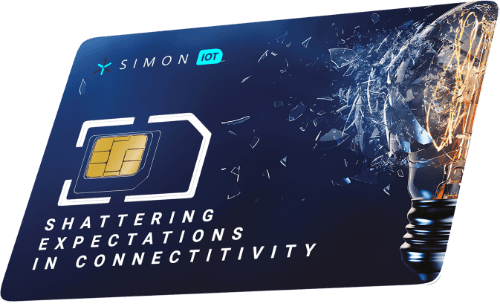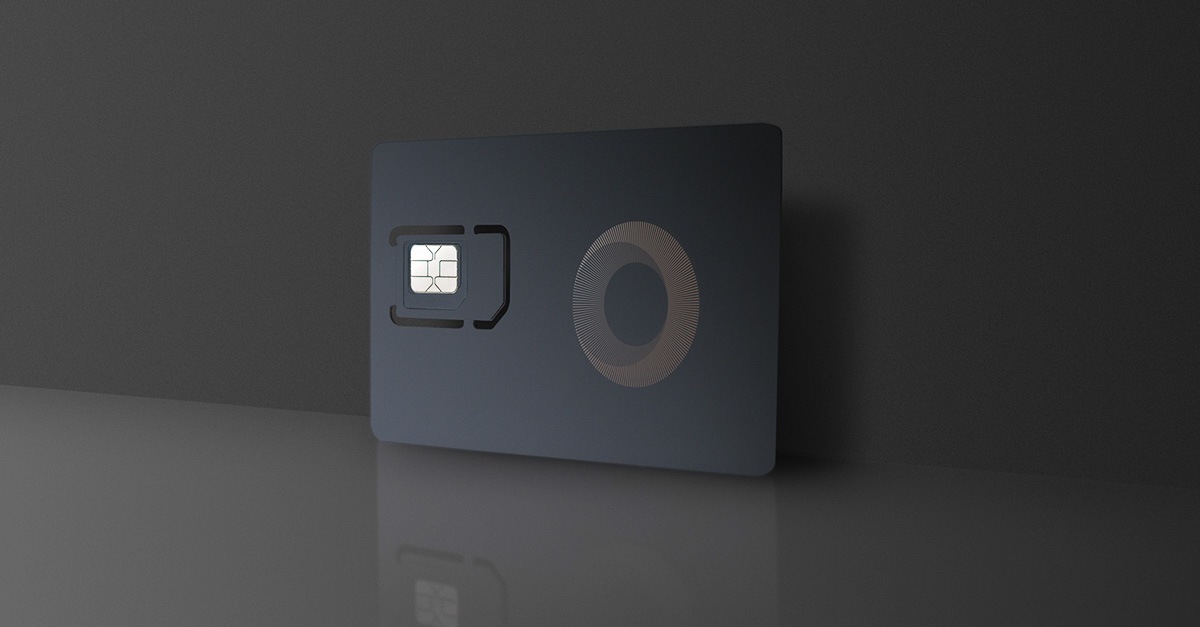Role Of Smart Sensors In Iot Advantages of IoT Monitoring Systems
Iot Remote Monitoring Solution Top Monitoring Tools for IoT Devices
The concept of smart cities relies closely on the mixing of technology and communication techniques to boost urban residing. One of the primary components in creating these advanced city environments is IoT connectivity options for smart cities (It Remote Monitoring Software). These options facilitate the communication amongst numerous gadgets, enabling revolutionary functions that enhance the quality of life for residents.
IoT, or the Internet of Things, encompasses an unlimited array of devices that gather and change knowledge through the internet. In the context of smart cities, this could embrace something from smart streetlights that regulate brightness primarily based on pedestrian movement to environmental sensors monitoring air high quality. Effective IoT connectivity choices are crucial for guaranteeing that these devices can talk seamlessly, offering real-time knowledge to city planners and residents alike.
Iot Remote Asset Monitoring Solution Benefits of IoT Remote Monitoring
Several types of connectivity choices are typically employed in smart cities, every with unique characteristics and capabilities. Cellular networks, as an example, offer widespread protection and higher information throughput. They permit IoT gadgets to communicate effectively, especially in areas the place other types of connectivity may be limited. Many smart metropolis applications depend on cellular technology to ensure fixed data streaming and interplay.
Low-Power Wide-Area Networks, or LPWAN, is another distinguished choice. This expertise is designed specifically for low-bandwidth and low-power functions. LPWAN is particularly helpful for sensor data, making it perfect for smart agriculture, waste administration, and environmental monitoring. The long-range capabilities of LPWAN also imply fewer base stations are required, making deployment more economical.
Wi-Fi is usually used for connecting gadgets in additional localized smart city deployments. This possibility is effective for urban areas with existing infrastructure, permitting varied devices to connect without incurring important prices. However, Wi-Fi connections can struggle in phrases of vary and battery life for remote IoT units. Solutions to enhance Wi-Fi coverage can embrace mesh networks that reach connectivity.
Role Of Smart Sensors In Iot Enhancing Efficiency with IoT Monitoring
Another notable interaction expertise employed in smart cities is Zigbee. This low-power, short-range wireless communication standard serves varied purposes from lighting systems to home automation. Zigbee is especially useful in dense city settings where many units are in close proximity to one another, providing a strong possibility for native mesh networks.

Bluetooth can be making significant inroads in the smart metropolis panorama. Its low energy consumption and ease of use make it a preferred choice for connecting personal devices to city infrastructure. Applications such as smart parking methods and public transport apps utilize Bluetooth connectivity to streamline services for users.
Fiber optic networks present one other layer of IoT connectivity options, especially for the backbone infrastructure of smart cities. They support excessive knowledge switch rates and can deal with substantial amounts of information from varied sensors and methods. This option is significant for central knowledge centers, guaranteeing that the immense quantity of data generated by smart metropolis gadgets is effectively processed.
The integration of satellite tv for pc technology is a rising developments, particularly for rural or underconnected areas. This choice allows cities to achieve far-flung gadgets that traditional networks may not service effectively. While satellite connectivity may not be as low in latency as different options, it's essential for comprehensive smart metropolis coverage.
Role Of Smart Sensors In Iot Achieving Efficiency in IoT Monitoring
As smart cities evolve, the potential for integrating a number of IoT connectivity options turns into increasingly viable. A hybrid strategy can yield flexibility, allowing cities to maximize the strengths of varied technologies whereas mitigating their weaknesses. This adaptability permits cities to reply to changing needs and the proliferation of new technologies.

Critical issues must also be addressed when discussing IoT connectivity choices for smart cities, notably within the realms of safety and interoperability. As more devices turn out to be interconnected, the risk of cyberattacks proliferates. City planners need to make sure that strong cybersecurity measures are in place to protect delicate data.
Iot Revolution Technologies Condition Monitoring with IoT Alerts
Moreover, guaranteeing interoperability amongst disparate systems and units is crucial. Smart cities comprise numerous technologies and platforms, and without standardized protocols, they might fail to communicate successfully. Emphasizing open standards allows cities to combine various methods, fostering collaboration and innovation.
The function of government and public coverage in promoting IoT connectivity in smart cities cannot be underestimated. Transparent insurance policies can help speed up the deployment of essential infrastructure. Additionally, municipalities can collaborate with private sector stakeholders to facilitate investment in IoT technologies and connectivity options.
Community engagement is one other vital part of developing profitable IoT connectivity choices. Residents’ insights can inform city planners' decisions concerning where to implement smart technologies. By fostering a culture of participation, cities can tailor IoT options to raised meet the wants and preferences of their citizens.
Iot Remote Monitoring And Control IoT Remote Monitoring: Applications and Functions
Smart cities hold the potential to create extra sustainable, environment friendly, and livable environments. By leveraging numerous IoT connectivity options, metropolis planners can optimize resources and infrastructure. This capability becomes notably important within the face of growing city populations and environmental challenges.
As urban areas proceed to expand, the demand for progressive options will solely increase. IoT connectivity will play a crucial role in addressing these calls for, enabling cities to operate extra intelligently. Through collaboration, funding, and engagement, smart cities can harness the facility of linked technologies to foster sustainable urban improvement.
It Remote Monitoring Software Gateway for Medical Device Monitoring
This journey in course of creating smarter urban environments is each an thrilling opportunity and a major challenge. As cities embrace IoT connectivity, they must navigate complexities while striving for inclusive, efficient, and resilient solutions.
In conclusion, the means forward for city dwelling will more and more depend upon the successful integration of IoT connectivity choices. They provide the backbone for progressive purposes that enhance everyday life, present essential information for informed decision-making, and contribute to the sustainable progress of cities. click resources By leveraging a variety of technologies and addressing challenges successfully, smart cities can cleared the path right into a more linked, efficient, and sustainable future.
- Wi-Fi networks improve connectivity in urban areas, offering seamless web access for IoT units in public spaces.
Role Of Smart Sensors In Iot Open Source IoT Device Management
- Cellular networks, including 4G and 5G, provide high-speed knowledge transmission essential for real-time communication amongst smart city components.
- Low Power Wide Area Network (LPWAN) technologies, corresponding to LoRaWAN, allow long-range knowledge transmission with minimal energy consumption, perfect for sensors.
- Zigbee and Z-Wave are short-range communication protocols that facilitate device-to-device connections for residence automation and localized IoT purposes.
Iot Remote Monitoring Solution Revolutionizing Patient Monitoring with IoT
- Satellite connectivity serves remote areas of smart cities the place terrestrial networks could additionally be restricted, offering global communication coverage.
- Bluetooth technology allows for fast connections between units and entry points, beneficial for localized smart city solutions like smart signage.
Remote Monitoring Achieving Efficiency in IoT Monitoring
- Ethernet connections deliver secure and high-bandwidth hyperlinks between central information systems and IoT units in city infrastructure.
- Mesh networking permits gadgets to speak with each other, increasing protection and reliability in densely populated areas with minimal centralized infrastructure.
- Iot Remote Monitoring And Control

- Fiber optic networks provide the spine for smart city knowledge transmission, supporting vast quantities of information site visitors at high speeds.
Iot Remote Asset Monitoring Solution System for Remote IoT Monitoring
- Edge computing in smart cities minimizes latency by processing data nearer to its supply, ensuring environment friendly response occasions for related purposes.
What are the most common IoT connectivity choices for smart cities?
Common IoT connectivity options for smart cities embody cellular networks (like 4G/5G), LPWAN (Low Power Wide Area Network) technologies corresponding to LoRaWAN and Sigfox, Wi-Fi, and Bluetooth. Each has its strengths, serving numerous applications relying on range, power consumption, and information price requirements.
How does 5G enhance IoT connectivity in urban areas?
5G enhances IoT connectivity by offering quicker data transfer speeds, decrease latency, and the flexibility to attach a massive variety of devices concurrently. This is crucial for functions like smart visitors administration and real-time public safety monitoring, thereby bettering general city efficiency.
Iot Remote Monitoring Solution Software for IoT Remote Monitoring
What position does LPWAN play in smart city applications?
LPWAN is designed particularly for low-power, long-range communication, making it perfect for battery-operated sensors and units in smart cities. LPWAN can support wide-area protection with minimal energy consumption, which is especially beneficial for applications like waste administration and environmental monitoring.
What are the security issues with IoT connectivity in smart cities?
(Remote Monitoring)
Security issues embrace information privateness, unauthorized access to gadgets, and potential service disruptions. Smart cities must implement sturdy encryption methods, safe authentication processes, and continuous monitoring to safeguard in opposition to cyber threats, making certain the integrity and reliability of linked systems.
Iot Global Open Source IoT Device Management
How can smart cities balance connectivity prices with performance?
Smart cities can strike a steadiness by conducting a thorough cost-benefit evaluation of varied connectivity options, prioritizing solutions that offer the proper trade-off between efficiency, coverage, and value. This could involve utilizing a mixture of technologies to optimize expenditures whereas assembly specific utility needs.
What are the implications of community reliability on smart metropolis IoT applications?
Iot Revolution Technologies Basics of IoT Remote Monitoring
Network reliability is crucial for smart metropolis IoT applications, as inconsistent connectivity can lead to data loss and system failures. To mitigate this, cities should put money into redundant connectivity options and incorporate edge computing to attenuate YOURURL.com downtime and ensure continuous operation of important companies.
What elements should metropolis planners think about when choosing IoT connectivity options?
City planners should contemplate components corresponding to protection area, population density, device density, energy consumption, and the character of the IoT functions being deployed. Understanding these factors helps be certain that the chosen connectivity choices effectively meet the unique wants of the city environment.
Can existing infrastructure support new IoT connectivity options?
Iot Global What is Remote Monitoring in IoT?
Many present infrastructures could be retrofitted or expanded to help IoT connectivity options. Upgrading network hardware, adding new base stations, or integrating LPWAN into current systems can facilitate the growth of smart city initiatives without requiring completely new infrastructure investments.
How do IoT connectivity choices impression sustainability in smart cities?
Role Of Smart Sensors In Iot Gateway for Medical Device Monitoring
IoT connectivity options can enhance sustainability by facilitating smarter useful resource management, reducing energy consumption, and optimizing waste disposal. Technologies like smart sensors monitor numerous environmental components, which assist authorities make data-driven decisions that positively affect urban sustainability.